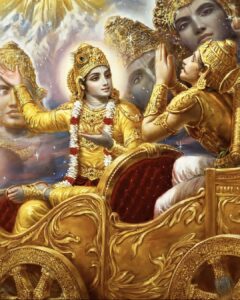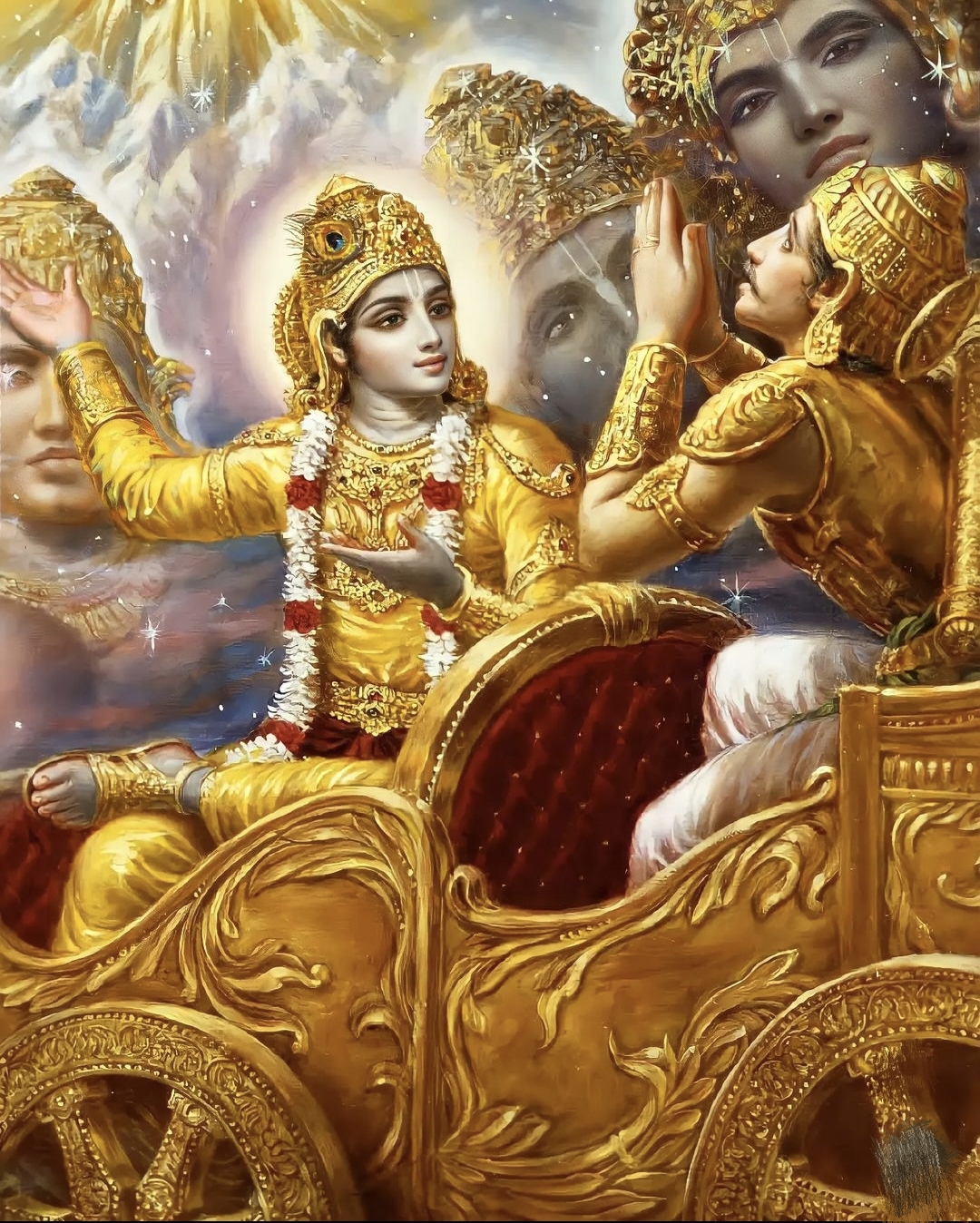Category: Avatara
The term ‘avatara’ derives from the Sanskrit word ‘avatarati,’ meaning ‘one who descends.’ In the context of Hindu theology, it specifically refers to divine beings who descend from the spiritual realm. The spiritual sky encompasses countless Vaikuntha planets, and it is from these celestial abodes that the Supreme Personality of Godhead and His expansions descend into the material universe.
Occasionally, the word ‘incarnation’ is used, which literally means ‘one who entered flesh’ and implies the acceptance of a material body. However, from a theological perspective, this term is not typically used to describe the Lord. In the Shrimad Bhagavatam 5.5.19, the body of the Lord is described as ‘durvibhavya,’ which means materially inconceivable. This is because the Lord’s form may sometimes appear material, or He may manifest a material-like body for specific purposes within His divine pastimes, as seen when He ‘left His body’ at the conclusion of the Dvaraka-lila. It’s essential to recognize that such a body should not be mistaken for an ordinary human body. Humans and other sentient beings cannot manifest avataras on their own unless they possess specific divine potency, in which case they are referred to as saktyavesa-avataras.
Therefore, it’s important to use the term ‘avatar’ or ‘avatara’ with due reverence and in the correct theological context. Using it loosely for icons in internet forums or digital photographs is not accurate, as it does not convey the profound spiritual significance and divine nature associated with the descent of the Supreme Personality of Godhead and His incarnations.
The 4 Categories of Avatars: Divine Manifestations and Their Profound Purpose
Discover the meaning and significance of avatars, their role in various cultures, and their importance in spiritual contexts. Learn about the 4 categories of Avatars also learn about the 24 avatars of Lord Krishna.






